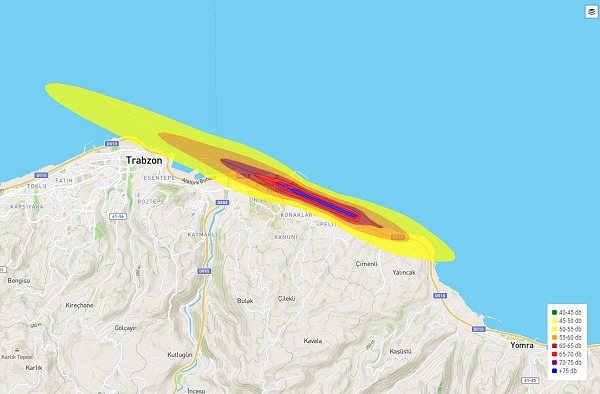May 20,2022 – Anıl ÜYE & Arzu ÇUBUKÇU

Noise and air pollution from aircraft and airport ground operations can cause problems for people who live, work, or study near airports. Airport noise emissions are calculated by considering the number and location of runways, aircraft types taking off and landing, various flight procedures, and different functional weights.
Noise maps are frequently used in aviation to calculate known or predicted parameters such as 3D digital elevations, traffic flow, and meteorological conditions. For designated areas, aircraft noise is mostly calculated using related software. Calculation points and distances between them are determined in a specific order on geographical maps and land layout plans.
When creating noise maps, it is critical to accurately determine the representative data on the area to be mapped for noise, as well as the noise emission data of the sources. When determining the environmental noise impact levels caused by airports, it is necessary to follow a specific approach.
Haritaevi collects, processes, and transforms reliable data into solutions with high precision and care using its expertise in geographical information. One of Haritaevi’s areas of activity is controlling the environmental impact of airport activities and preparing more livable and sustainable environments through measures taken against global warming and climate change.
Haritaevi created AeroDataMarket in 2018, which contains many spatial data on the civil aviation sector and is a platform for airport noise map studies. Impact analysis is another study that is based on noise maps on the platform. Population and map data for the research area must be collected first for impact analysis. In this manner, the approximate number of residents, educational institutions, hospitals, and living persons exposed to noise at work can be determined. Impact analysis can now be performed by advanced noise calculation software.
The effects of noise on the environments near airports vary depending on traffic density and flow during the day, evening, and night. Haritaevi calculates individual exposures in airport domains based on time zones and extracts impact analysis results based on decibel-dB(A) intervals.
Haritaevi works within the framework of ICAO Doc 9829 AN/451 Balanced Approach to Aircraft Noise Management Guide to reduce the environmental effects of airport noise; it conducts scenarios, modeling, noise monitoring, and mapping studies. One of the primary goals of each airport is to develop quality solutions for the long-term growth and development of aviation, while also assisting each airport in meeting the highest environmental standards appropriate to its needs.




